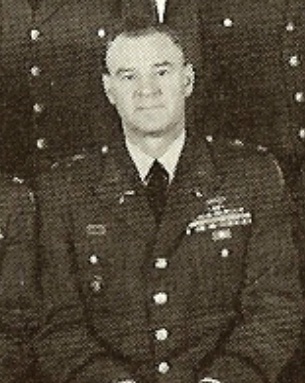Saigon
Saturday Night, 24 July 1965This has been the nicest Saturday that I’ve known since arriving in Vietnam! I finished up all my work by 6 p.m., had something to eat at the Hong Kong BOQ mess, and am now at my BOQ. We didn’t have a single flap today and it was just plain pleasant at the office for a change. Sure hope it stays that way.
Things are going so good that I am planning to take the day off tomorrow and do some shopping. Major [Raymond] Kostner, the chief of my Sealift Coordination Center, has offered to take me around to the places where he has bought some things for his family before. Am looking forward to this, as this is the first time I’ve had someone who has been around for several months to show me the way. The other little shopping I did was when I first got here and just went with another newcomer. Didn’t know where or what to look for then.
Got a letter from Lieutenant Colonel Chuck Olson of Leavenworth who asked me to buy him about $20 worth of cigars, but he didn’t send any money. Will write him a note tonight and tell him that I’ll be glad to if he will send a money order.
Sunday night General Crowley is having cocktails and dinner for selected guests at the Moulin Rouge (that’s the fancy restaurant and night club Grady took me to when he was checking security). I’ve been invited and will attend, but won’t stay long. Although it’s a real nice place, I don’t feel comfortable there as it is probably a good place to get zapped because of the large number of high-ranking US who frequent it. According to Grady it is a prime target.
General Crowley is leaving Monday to go back to Honolulu for conferences and to see his family. When they evacuated dependents early this year, Gen. C sent his wife to Honolulu. It was a good idea because he has frequent business back there and gets to see his wife from time to time. They do not have any children.
[Lieutenant Colonel Lloyd L.] "Scooter" Burke was wounded today. [Burke was wounded on 22 July.] He’s a Medal of Honor winner from Korea, in 1951. I’ve known him for a long time, and he’s just crazy enough to get himself killed. It’s a real good thing he got wounded and is being evacuated, because he takes such needless risks that sooner or later he would have been killed. He had no business being where he was and doing what he was doing when he got wounded. That’s lieutenant’s work.
Am a little worried about old Harry the Horse [Brockman]. Haven’t seen him in over a month. I tried to call him over the phone today, but couldn’t get through. Will try again Monday. Saw [Major] Tom Parsons this afternoon and he’s anxious to get on home in August. Haven’t seen any other old friends lately. Reckon I’ve been too busy.











